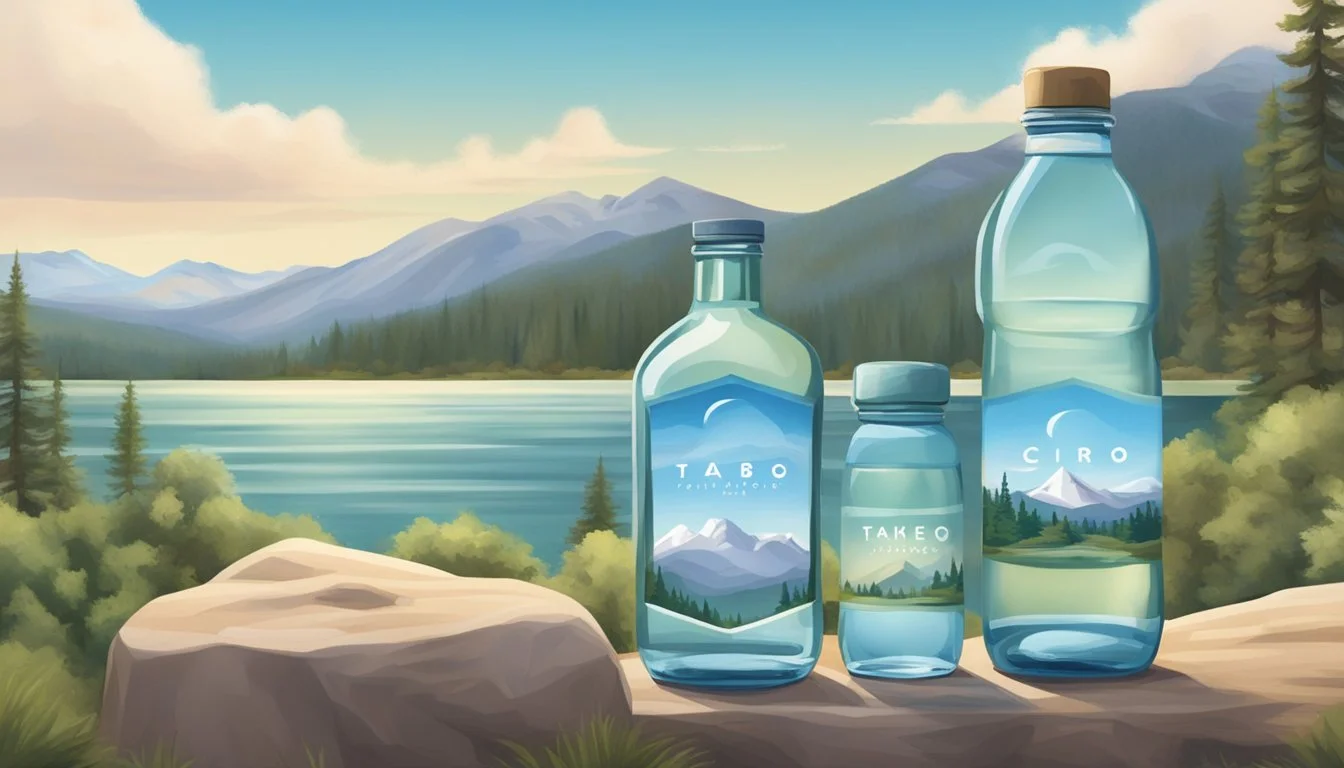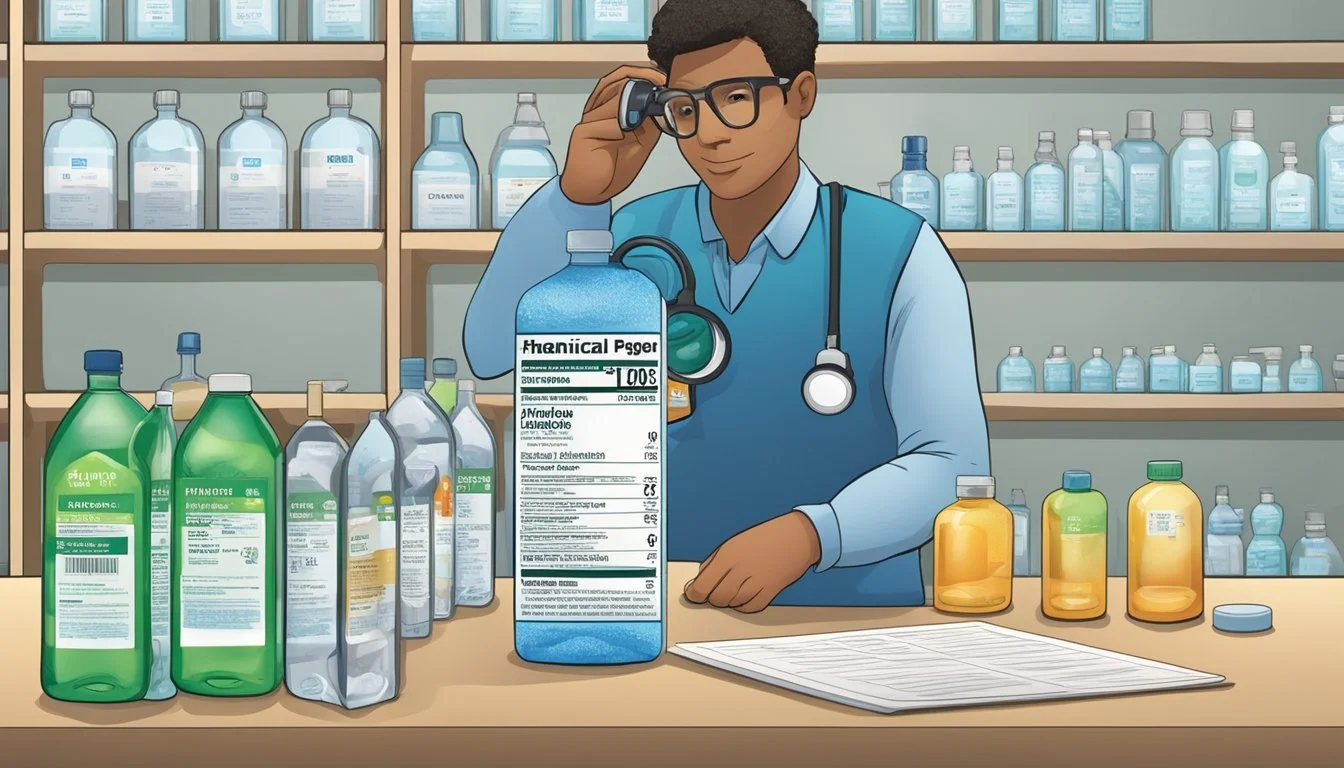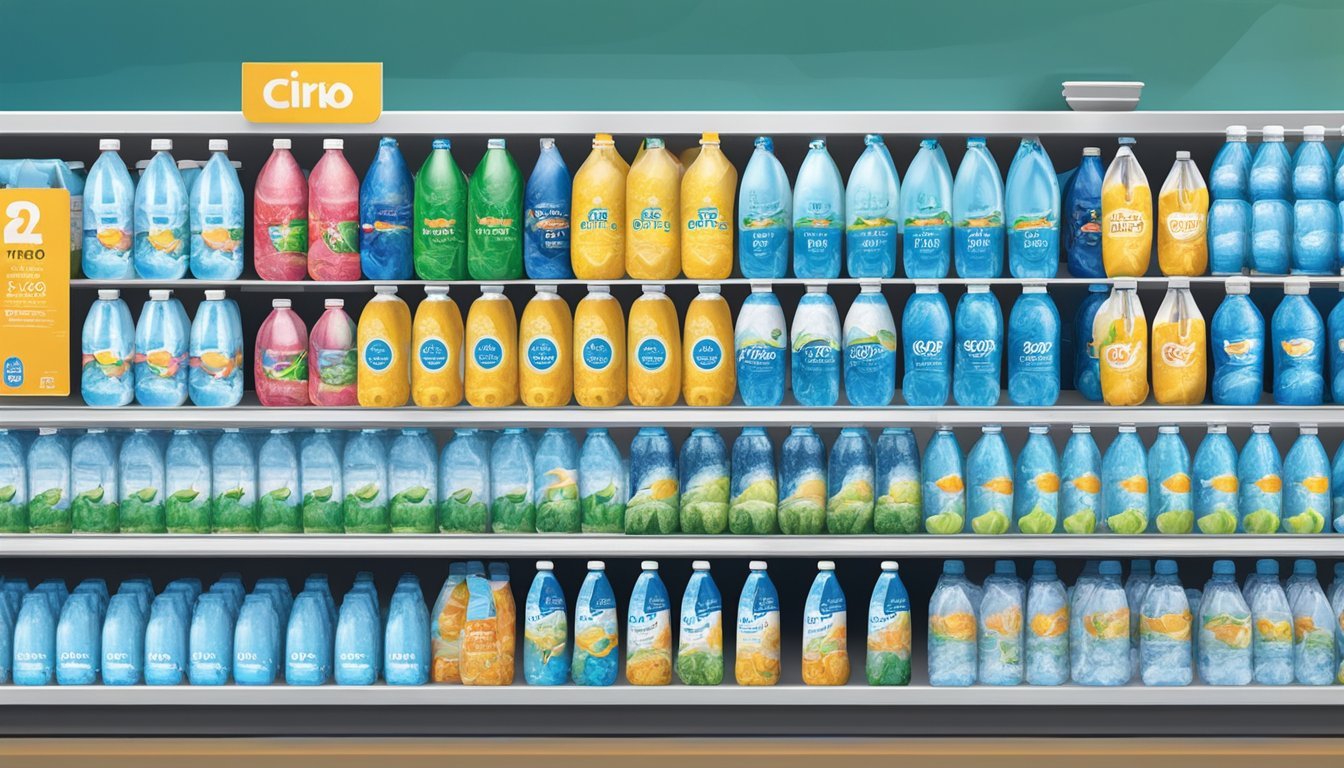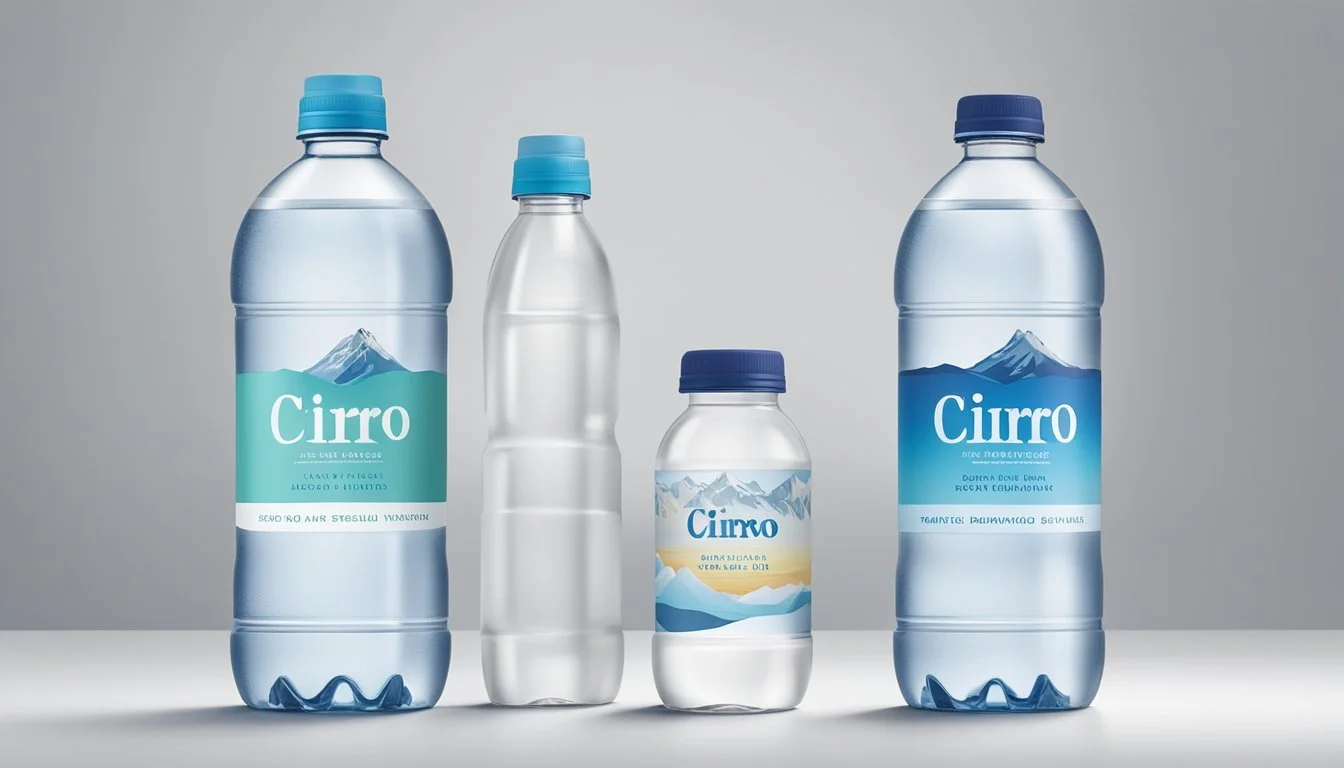Tahoe vs. Cirro
Detailed Comparison of Bottled Water Quality
When it comes to choosing between Tahoe and Cirro bottled water, consumers often face a difficult decision. Both brands have carved out a significant presence in the market and offer unique features that appeal to different preferences. While Tahoe boasts a crisp, refreshing taste sourced from pristine mountain springs, Cirro stands out with its balanced mineral content and environmentally friendly packaging.
Tahoe water is renowned for its purity and comes from natural mountain springs in the western U.S. It's a favorite for those who seek a clean and straightforward hydration experience. Cirro, on the other hand, appeals to health-conscious individuals with its optimal blend of minerals and sustainable production methods.
For those prioritizing taste and natural sourcing, Tahoe might be the better option, whereas Cirro excels in offering a balanced mineral profile and eco-friendly credentials. This comparison ensures that whether the primary concern is taste, sourcing, or sustainability, one of these two brands will meet the need effectively.
The Basics of Bottled Water
Bottled water has emerged as a global staple for those seeking convenient hydration. It comes in various forms including purified, spring, and mineral water. Each type is sourced and treated differently, catering to diverse preferences and needs.
Types of Bottled Water:
Purified Water: Treated to remove impurities. Common methods include distillation, deionization, or reverse osmosis.
Spring Water: Sourced from natural springs. Often contains natural minerals.
Mineral Water: Contains added minerals. Sourced from mineral springs.
Advantages:
Convenience: Easily portable and accessible.
Perceived Taste: Many people believe bottled water tastes better than tap water.
Variety: Available in multiple types and with added nutrients or flavors.
Health and Hydration:
Proper hydration is essential for maintaining health. Bottled water provides a reliable source of clean drinking water, especially in regions where tap water quality may be questionable. However, it’s crucial to consider the environmental impact due to plastic waste.
Comparison with Tap Water:
Feature Bottled Water Tap Water Source Various (spring, purified, mineral) Local reservoirs/groundwater Cost Higher, per bottle Lower, part of utility bill Taste Perceived better by some Varies by location Health Consistently regulated Subject to local treatment
Considerations:
Environmental Impact: Bottled water production and disposal contribute to pollution.
Economics: Costlier compared to almost negligible cost of tap water.
Accessibility: Readily available in stores, but not always the sustainable choice.
Exploring different water options can help consumers decide which is best suited to their hydration and health needs.
Understanding Water Quality and Safety
Determining the quality and safety of bottled water involves understanding various factors such as its source, regulatory standards, and the potential contaminants it might contain.
Sources of Water: From Spring to Bottle
Bottled water can come from various sources, including natural springs, wells, and municipal supplies. Natural spring water, like that from Mountain Valley, is often prized for its clean taste and natural mineral content.
Municipal sources are treated tap water repurposed in bottles. The label on the bottle should specify the source, which can help consumers make informed choices about their water.
Regulatory Standards and Testing
The U.S. Environmental Protection Agency (EPA) sets stringent standards for tap water, whereas the Food and Drug Administration (FDA) regulates bottled water. Bottled water must meet similar safety standards but is subject to less frequent testing.
Frequent checks for contaminants like lead, bacteria, and heavy metals are vital. Brands should provide transparency through accessible reports detailing their water testing outcomes, ensuring it adheres to safety criteria.
Identifying Contaminants and Chemicals
Consumers should be aware of potential contaminants in bottled water. Common concerns include bacteria, lead, and other heavy metals. Chemicals from plastic bottles can leach into the water, affecting its taste and safety.
Look for brands that guarantee testing for a range of contaminants. Leads and other toxins should be below EPA-recommended levels, ensuring the water is safe for consumption. Always check labels and brands’ testing certifications for assurance.
Chemical Composition and Health Implications
A thorough analysis of Tahoe and Cirro bottled waters includes evaluating their pH levels, mineral content, and potential contaminants. These factors have direct implications on hydration, overall health, and possible risks.
pH Levels and Alkalinity
Tahoe water typically has a neutral to slightly alkaline pH, ranging between 7.5 and 8.5. This makes it beneficial for those seeking to balance the acidity in their bodies.
Cirro, on the other hand, often falls within a pH range of 6.5 to 7.5, closer to neutral. Alkaline water supporters claim that higher pH can help neutralize acid in the bloodstream, although scientific evidence is mixed on this point.
Minerals and Electrolytes for Hydration
Both Tahoe and Cirro contain essential minerals and electrolytes, which play a crucial role in maintaining optimal hydration. Tahoe’s water is rich in calcium, magnesium, and potassium, contributing to bone health and muscle function.
Cirro offers a balanced mix of sodium, potassium, and magnesium, which can aid in replenishing fluids lost during physical activity. The presence of these minerals supports the body's natural processes and enhances overall hydration efficacy.
Potential Health Effects of Contaminants
Contaminants in bottled water can significantly affect health. Tahoe is generally free from harmful substances like bisphenol A (BPA) and bisphenol S (BPS), known for their negative health impacts, including potential cancer risks.
Cirro, aiming for broader appeal, has rigorous quality controls but occasional testing has revealed traces of PFAS (per- and polyfluoroalkyl substances), which have been linked to various health issues. It's crucial for consumers to be aware and choose brands with transparent testing and contaminant disclosures.
Taste Profiles of Tahoe and Cirro
Tahoe and Cirro are both premium bottled water brands with distinct taste profiles. These differences are primarily shaped by their mineral content and purification processes.
Influence of Minerals and Purification on Taste
Tahoe water is sourced from the pristine Tahoe Basin. It typically contains moderate potassium levels and low sodium content. This mineral composition results in a clean, crisp taste with a hint of earthiness.
Cirro, on the other hand, sources its water from a naturally filtered artesian aquifer. This source ensures a smooth, neutral taste that is often described as light and refreshing. The low mineral content in Cirro enhances its pure and subtle flavor.
Water Sommelier Insights on Water Taste
Water sommeliers frequently highlight the importance of a water's source in shaping its taste profile. Tahoe's natural minerals contribute to its unique, refreshing taste, making it appealing to those who appreciate a light, slightly mineralized flavor.
Cirro's artisanal source results in a subtle, almost imperceptible mineral taste. Sommeliers often note its balanced and clean finish, which makes it versatile and broadly appealing. This mild flavor lends itself well to a wide range of culinary applications, from fine dining to casual hydration.
Environmental Impact and Sustainability
Examining the environmental impact and sustainability of bottled water encompasses packaging materials, eco-friendly practices, and future consumption trends. Major considerations include the use of plastics, glass alternatives, and industry efforts to reduce waste and promote sustainability.
Packaging Materials and Waste
Tahoe and Cirro use different packaging solutions. Tahoe relies on plastic bottles, which contribute to significant environmental concerns. Plastic production involves high resource use and can result in microplastics contaminating natural water sources.
Cirro opts for glass bottles that are more environmentally friendly. Glass can be recycled indefinitely without loss of purity, reducing the waste burden. However, the weight of glass increases transportation emissions.
Both brands could benefit from exploring innovative materials like plant-based packaging to minimize their environmental footprint. Adopting reusable bottles could also lessen waste significantly.
Eco-Friendly Practices Among Water Brands
Tahoe focuses on local natural spring water sources to reduce transportation distances. This minimizes their carbon footprint compared to brands that import water from distant springs. They have also joined initiatives like Drink Tahoe Tap, encouraging the reduction of single-use plastics.
Cirro, known for its sparkling water varieties, invests in eco-friendly operations, including energy-efficient bottling facilities. They conduct regular assessments by independent bodies like the Environmental Working Group to maintain environmental standards.
Both brands are striving towards sustainability, yet greater transparency about their practices could enhance consumer trust.
The Future of Water Consumption
Water consumption patterns are evolving with a growing emphasis on sustainability. Consumers are moving towards more environmentally friendly options such as reusable bottles and local refilling stations. Initiatives like South Lake Tahoe’s plastic water bottle ban highlight a communal effort to reduce waste.
Path and Flow offer promising directions for the industry, focusing on sustainable, plant-based packaging solutions and zero-waste goals. As awareness of issues like forever chemicals and microplastics increases, the demand for eco-conscious brands will rise.
The industry must innovate to meet these expectations while ensuring the availability of high-quality water.
Comparison of Brand Practices
Both Tahoe and Cirro focus on delivering high-quality bottled water. They differ significantly in their company backgrounds, water sources, product ranges, and special offerings.
Company Histories and Water Sources
Tahoe water is sourced from the pristine Tahoe Basin, known for its high potassium and low sodium content. The brand emphasizes environmental sustainability and top-notch water quality. Cirro sources water from multiple natural springs across the western U.S., ensuring rich mineral profiles.
While Tahoe prides itself on its localized sourcing, Cirro capitalizes on its diverse spring locations. Each boasts rigorous purification processes to ensure clean and safe drinking water. Both companies strive to provide premium bottled water, but their unique sources set them apart.
Product Range and Special Offerings
Tahoe offers a focused product range, emphasizing its premium mineral-rich water. Often found in eco-friendly packaging, it caters to environmentally conscious consumers. Cirro, on the other hand, boasts a broader product spectrum, including sparkling waters and flavored options.
Cirro also collaborates with wellness brands like Essentia and Smartwater. These partnerships enhance its market presence. In contrast, Tahoe emphasizes minimalism and quality over variety.
While Tahoe sticks to its core product, Cirro diversifies its offerings to appeal to a wider audience, creating a competitive edge in the market. Both brands have distinct approaches, targeting different consumer needs and preferences.
Consumer Perspective and Brand Loyalty
Consumers prioritize several factors when choosing between bottled water brands such as Tahoe and Cirro. These factors include price, taste, and quality, as reflected in their ratings and reviews.
Price Comparison and Perceived Value
Price plays a significant role in consumer decisions. Tahoe tends to be priced slightly higher than Cirro. Despite the higher cost, many consumers perceive Tahoe's quality and taste to justify the premium price. Cirro, known for its affordability, appeals to budget-conscious buyers. The lower price point makes Cirro a popular choice for families, particularly those with children, who consume water frequently.
Brand Average Price per Bottle Target Consumers Tahoe $1.50 Quality-seeking consumers Cirro $1.00 Budget-conscious families
Customer Testimonials and Reviews
Customer reviews are vital in influencing brand loyalty. Tahoe receives high praise for its crisp and clean taste. Many reviews highlight its appealing taste, making it a favored choice among taste-oriented buyers. Cirro, while appreciated for its affordability, has mixed reviews regarding flavor. Some consumers feel Cirro could improve its taste quality.
Tahoe Review Highlights:
"Refreshing and superior taste."
"Worth every penny."
Cirro Review Highlights:
"Affordable and convenient."
"Taste could be better."
Trends in Consumer Preferences
Consumer preferences show a trend towards healthier and eco-friendly choices. Tahoe's commitment to sustainable practices has garnered a loyal customer base. Consumers indicate a willingness to pay more for environmentally responsible brands. Cirro's market share reflects its focus on affordability and convenience. It attracts practical buyers who prioritize value over premium features.
Brand loyalty is often shaped by a combination of taste, cost, and ethical considerations, demonstrating the diverse priorities of today's consumers.
Access and Convenience of Purchase
Tahoe bottled water can be found in many grocery stores and convenience stores, making it easily accessible for most consumers. Its availability ensures that whether you're shopping for your weekly groceries or just need a quick refreshment, you can purchase Tahoe water without hassle.
Cirro, on the other hand, tends to be more specialized. It may not be as widely available in every grocery store. You might need to go to premium or specialty stores to find Cirro, or order it online. This might pose a slight inconvenience compared to the more ubiquitous Tahoe.
One benefit for both brands is the reliable supply chain, ensuring their products are stocked regularly. For those who prefer online shopping, both brands offer options through their websites and various e-commerce platforms, providing added convenience.
In terms of packaging, Tahoe often provides bulk purchasing options, which can be particularly convenient for large households or events. Cirro also offers various sizes, though its premium nature sometimes means it is presented in smaller, more exclusive packages.
The ease of purchasing Tahoe and Cirro water is generally high, but potential buyers should consider whether they prefer easy access at numerous physical stores or the experience of seeking out a specialized product.
Future Trends in Bottled Water
The bottled water industry is undergoing significant transformations, driven by innovations in technology and shifts towards sustainability. Consumers are increasingly prioritizing clean water and environmentally friendly options, influencing both product development and market dynamics.
Innovations in Filtering and Purification
Recent advancements in filtering and purification technologies are setting new standards for bottled water quality. Brands are investing in sophisticated methods to remove impurities and enhance the taste of water. These include multi-stage filtration systems that eliminate contaminants such as heavy metals and pathogens.
Emerging techniques, such as ultraviolet (UV) light treatment and reverse osmosis, are gaining traction. These technologies not only ensure the safety of the water but also improve its mineral content. The focus is on delivering water that meets rigorous quality reports, offering consumers pure, clean water. This has led to innovations in home water filters and portable filtration solutions.
Advancements in Eco-Friendly Packaging
Eco-friendly packaging has become a critical focus for bottled water companies. Traditional plastic bottles are being reevaluated due to their environmental impact. Alternatives like biodegradable bottles, plant-based plastics, and recycled materials are being explored and increasingly adopted.
Some brands are also introducing reusable bottles made of durable materials like stainless steel and glass. Companies are also emphasizing minimalistic packaging designs to reduce waste. Efforts to optimize the supply chain to lower carbon footprints are a key trend, responding to consumer demands for sustainable practices.
Emerging Brands and Market Growth
The bottled water market is seeing a rise in new and innovative brands. These emerging players are often driven by sustainability and health-conscious ideals. They are capitalizing on niche markets, such as functional water enhanced with vitamins and minerals or alkaline water, which is believed to offer health benefits.
Market growth is being fueled by rising consumer awareness of water quality and health implications. Younger demographics are particularly inclined towards premium and health-centric bottled water options. Statistical data indicates a substantial increase in market size, as consumers shift away from sugary beverages to healthier alternatives like purified and filtered bottled water.
Practical Information for Consumers
To make informed choices, consumers should understand how to read water quality reports, select water that meets their specific needs, and ensure the safety of their drinking water at home.
How to Read Water Quality Reports
Consumers should start by looking for a PDF of the water quality report provided by the bottled water company. Key parameters to check include the source of water, mineral content, and any testing results for contaminants.
Focus on levels of PFAS, lead, and other pollutants. Water companies typically publish these reports online or offer them via email upon request. Reliable brands often make their reports easily accessible and updated.
A typical report may include:
Total Dissolved Solids (TDS): Indicates the water's purity. Lower is usually better.
pH Level: Should be around 7 for neutrality.
Contaminants: Check for any harmful substances and their concentrations.
Choosing the Right Water for Your Needs
Different consumers have different requirements. For instance, athletes may prefer water with higher mineral content for electrolyte replenishment, while others might favor purified options with minimal TDS. Circumstances like health conditions or lifestyle choices may influence preference.
Tips for Ensuring Water Safety at Home
Ensuring safe drinking water at home involves a combination of good practices and the right equipment. Use certified water filters like Brita to remove potential contaminants. Regularly replace filters as recommended by the manufacturer.
Tap water should be tested periodically, especially if using a private well. Home testing kits or professional services can check for contaminants like lead or bacteria. When necessary, boiling water is an effective method to kill pathogens.
Bottom Line
When comparing Tahoe and Cirro bottled waters, several factors influence consumer preference.
Tahoe water is sourced from the pristine Tahoe Basin and offers a unique mineral profile. It is higher in potassium and maintains a low sodium content. This makes it a healthier option for those mindful of their mineral intake.
Cirro, on the other hand, focuses on providing hydration with a balance of essential minerals. Often marketed as having a smooth taste, it is known for being sourced from protected aquifers and undergoing rigorous filtration processes to ensure purity.
Hydration is a critical factor for consumers. Both brands effectively hydrate, but the choice may come down to the mineral composition. Some may prefer Tahoe's higher potassium levels, while others might lean towards Cirro's balanced mineral content.
Health-conscious consumers should assess their dietary needs. Tahoe's low sodium and varied mineral content can be beneficial. Cirro's consistent filtration and mineral balance offer a different health benefit, likely catering to those requiring stable hydration levels.
Pricing and availability can also play a role. Tahoe might be preferred by those in regions where it is readily available and reasonably priced. Cirro, known for its accessibility and competitive pricing, can be a favorable choice for budget-conscious buyers.
Ultimately, the decision between Tahoe and Cirro hinges on individual preferences in taste, mineral content, and health considerations. Both brands provide quality hydration options, meeting various consumer needs effectively.
More About Tahoe
Mountain Valley Spring Water vs Tahoe: Which Bottled Water is Better?
Tahoe vs Richard's Rainwater: Which Bottled Water is Better?
Tahoe vs Whole Foods Italian Still Mineral water: Which Bottled Water is Better?








